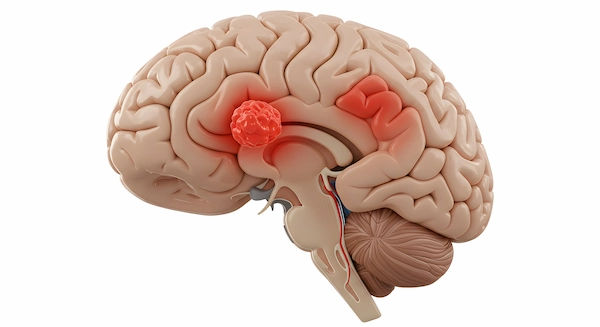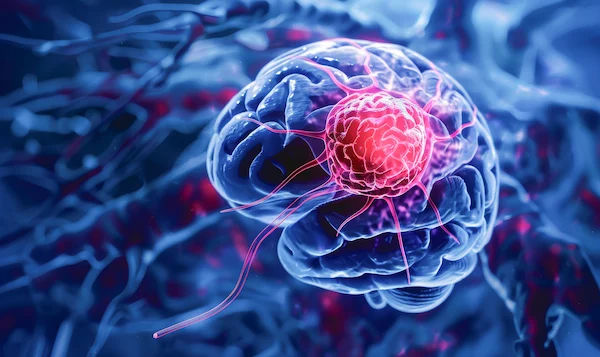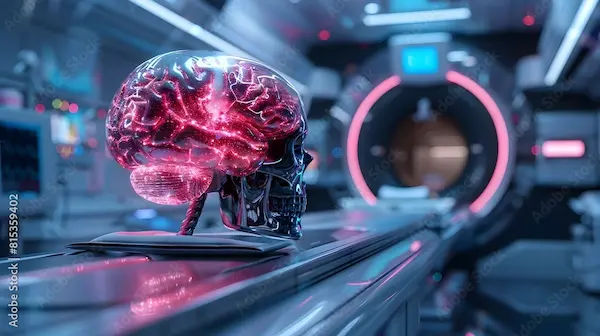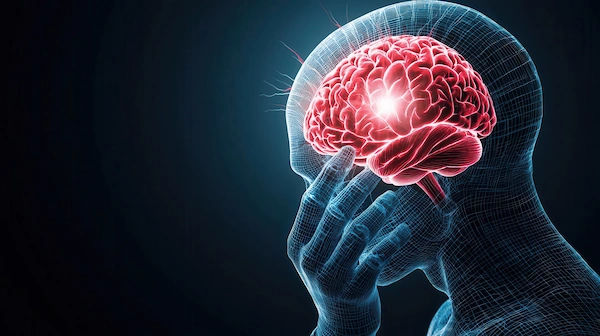Understanding Brain Tumours: A Comprehensive Guide to Symptoms, Diagnosis, and Treatment
Understand brain tumours, their symptoms, diagnosis, and treatment options. Learn about benign and malignant tumours, modern therapies, and supportive care to navigate this complex condition.


Introduction
Hearing the words "brain tumour" can be overwhelming and frightening. The brain, as the command centre of the body, evokes a deep sense of vulnerability when something goes wrong. Knowledge, however, is empowering. This guide demystifies brain tumours, breaking down complex medical information into an understandable roadmap. It covers what a brain tumour is, how to recognise its potential signs, the steps to diagnosis, and the multifaceted approaches to treatment and care. A brain tumour diagnosis is a journey rather than a single event, and modern medicine offers many strategies to manage it effectively. Whether you are seeking information for yourself or a loved one, this article provides a clear, compassionate overview of what to expect, emphasising that you are not alone. The aim is to empower you to have informed discussions with healthcare professionals about management and potential outcomes.
What is a Brain Tumour? Decoding the Basics
A brain tumour is an abnormal mass of tissue in which cells grow and multiply uncontrollably. Unlike normal cells, these tumour cells do not die when they should and ignore signals to stop dividing. This unchecked growth can disrupt vital brain functions. However, not all brain tumours are the same, and understanding the key distinctions is the first step in decoding this condition.
Benign vs. Malignant Brain Tumours: Understanding the Difference
It is important to understand the distinction:
- Benign Brain Tumours: Non-cancerous growths that are typically slow-growing, have clear borders, and do not spread to other parts of the brain or body. Even so, their location can make them dangerous, as a benign tumour pressing on a critical brain area can cause serious neurological problems.
- Malignant Brain Tumours: Cancerous growths that are fast-growing, have irregular borders, and invade nearby healthy brain tissue. These are life-threatening due to their aggressive nature. The term "brain cancer" usually refers to malignant tumours.
Primary vs. Metastatic Brain Tumours: Where Did It Start?
This distinction refers to the tumour's origin:
- Primary Brain Tumours: Begin in the brain itself and can be benign or malignant. Common types include gliomas (such as glioblastoma) and meningiomas.
- Metastatic (Secondary) Brain Tumours: Occur when cancer cells from another part of the body (for example, lung, breast, or skin) spread to the brain via the bloodstream. These tumours are always malignant.
Consult Top Doctors for Your Symptoms
Recognising the Red Flags: Common Symptoms of a Brain Tumour
Symptoms vary widely depending on the tumour’s size, type, and location. They can result from increased pressure within the skull or interference with specific brain regions.
Symptoms Related to Increased Intracranial Pressure
As the tumour grows, pressure inside the skull rises, causing:
- Persistent, worsening headaches, often worse in the morning or waking you from sleep.
- Nausea and vomiting, particularly in the morning.
- Blurred or double vision.
- New-onset seizures.
Symptoms Related to the Tumour's Specific Location
Different brain regions control different functions:
- Frontal Lobe: Changes in personality, judgement, or behaviour; planning difficulties; weakness on one side of the body.
- Temporal Lobe: Memory, language comprehension or speech, and hearing problems.
- Parietal Lobe: Sensory perception issues, reading difficulties, or problems with spatial awareness.
- Occipital Lobe: Vision loss in one or both eyes.
- Cerebellum: Loss of coordination, balance problems, and dizziness.
When to Seek Immediate Medical Attention
Headaches are common and rarely indicate a brain tumour. Consult a doctor if you experience a combination of the above symptoms, particularly if they are new, persistent, and worsening. Sudden severe headache, first-time seizure, or sudden weakness/numbness requires urgent medical care. For persistent or concerning symptoms, you can consult a neurologist online with Apollo24|7 for an initial evaluation.
The Diagnostic Journey: How are Brain Tumours Identified?
If a tumour is suspected, a systematic process is followed to confirm its presence, type, and exact location.
Neurological Examination: The First Step
A doctor checks vision, hearing, balance, coordination, reflexes, and strength to identify affected nervous system areas.
Imaging Tests: MRI and CT Scans
Imaging is crucial:
- Magnetic Resonance Imaging (MRI): Provides detailed brain images using magnets and radio waves. A contrast dye often highlights tumours.
- Computed Tomography (CT) Scan: Uses X-rays for detailed imaging and is commonly used in emergencies to detect bleeding or large masses.
The Gold Standard: Biopsy and Histopathological Analysis
While imaging shows a mass, a biopsy is often needed for a definitive diagnosis. Tissue samples are examined to determine whether the tumour is benign or malignant, its grade, and specific genetic markers. This guides the most effective treatment plan.
A Multidisciplinary Approach: Modern Treatment Options for Brain Tumours
Treatment is personalised, involving specialists such as neurosurgeons, neuro-oncologists, and radiation oncologists. Options depend on tumour type, size, location, and overall health.
Brain Tumour Surgery: Maximal Safe Resection
Surgery aims to remove as much of the tumour as possible without damaging critical brain areas. Techniques like intraoperative MRI and brain mapping increase precision and safety.
Radiation Therapy: Targeting Cancer Cells
Radiation uses high-energy beams to kill tumour cells. It may follow surgery or serve as primary treatment when surgery is not possible. Techniques like Stereotactic Radiosurgery (Gamma Knife) focus radiation precisely on the tumour while sparing healthy tissue.
Chemotherapy and Targeted Drug Therapies
- Chemotherapy: Drugs kill fast-dividing cancer cells, often combined with radiation.
- Targeted Therapy: Drugs attack specific abnormalities in cancer cells, often with fewer side effects than traditional chemotherapy.
Emerging Treatments: Immunotherapy and Tumour Treating Fields
- Immunotherapy: Uses the body’s immune system to fight cancer.
- Tumour Treating Fields (TTF): Uses low-intensity electric fields to disrupt cancer cell division.
- Patients wear a device on the scalp, primarily for glioblastoma treatment.
Life After Diagnosis: Recovery, Rehabilitation, and Support
Recovery extends beyond treatment. Patients may require:
- Physical Therapy: To regain strength, balance, and coordination.
- Occupational Therapy: To relearn daily skills.
- Speech Therapy: To address speaking or swallowing issues.
- Psychological Support: Counselling and support groups for patients and families.
Conclusion
A brain tumour diagnosis is challenging, but medical expertise and technological advancements offer increasingly personalised treatment options. While "cure" is not guaranteed for every tumour type, the focus is on effective management, improved quality of life, and extended survival. Early detection, accurate diagnosis, and a comprehensive treatment plan from a dedicated team are crucial. Patients are encouraged to actively participate in their care, ask questions, seek second opinions, and use available support. Apollo24|7 connects patients with experienced neurologists and oncologists for guidance. Staying informed, hopeful, and supported is key—no one faces this journey alone.
Consult Top Neurologists
Consult Top Neurologists

Dr. Aditendraditya Singh Bhati
Neurosurgeon
18 Years • MBBS(2004), DNB Neurosurgery(2014); MNAMS; Fellow Neuroendoscopy
Delhi
Apollo Hospitals Indraprastha, Delhi
(100+ Patients)

Dr. Ganeshgouda Majigoudra
Neurologist
10 Years • MBBS, MD ( GENERAL MEDICINE) DM (NEUROLOGY)
Bengaluru
Apollo Clinic, JP nagar, Bengaluru

Dr. E Prabhakar Sastry
General Physician/ Internal Medicine Specialist
40 Years • MD(Internal Medicine)
Manikonda Jagir
Apollo Clinic, Manikonda, Manikonda Jagir
(150+ Patients)

Dr Rajashekar Mummadi
Neurologist
3 Years • MBBS, DNB General Medicine, DRNB Neurology
Hyderabad
Dr Ram's Neuro Clinic, Hyderabad
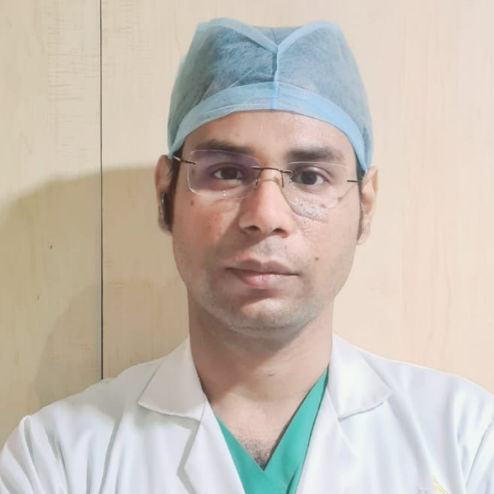
Dr Debnath Dwaipayan
Neurosurgeon
9 Years • MBBS, MS(Gen. Surgery), DrNB (Neurosurgery)
Delhi
Apollo Hospitals Indraprastha, Delhi
Consult Top Doctors for Your Symptoms

Dr. Aditendraditya Singh Bhati
Neurosurgeon
18 Years • MBBS(2004), DNB Neurosurgery(2014); MNAMS; Fellow Neuroendoscopy
Delhi
Apollo Hospitals Indraprastha, Delhi
(100+ Patients)

Dr. Ganeshgouda Majigoudra
Neurologist
10 Years • MBBS, MD ( GENERAL MEDICINE) DM (NEUROLOGY)
Bengaluru
Apollo Clinic, JP nagar, Bengaluru

Dr. E Prabhakar Sastry
General Physician/ Internal Medicine Specialist
40 Years • MD(Internal Medicine)
Manikonda Jagir
Apollo Clinic, Manikonda, Manikonda Jagir
(150+ Patients)

Dr Rajashekar Mummadi
Neurologist
3 Years • MBBS, DNB General Medicine, DRNB Neurology
Hyderabad
Dr Ram's Neuro Clinic, Hyderabad

Dr Debnath Dwaipayan
Neurosurgeon
9 Years • MBBS, MS(Gen. Surgery), DrNB (Neurosurgery)
Delhi
Apollo Hospitals Indraprastha, Delhi
More articles from Brain Tumor
Frequently Asked Questions
What are the most common early signs of a brain tumour?
Persistent, worsening headaches (especially in the morning), new-onset seizures, unexplained nausea or vomiting, and gradual changes in vision, speech, or personality.
Can a benign brain tumour turn into cancer?
It is very rare for a benign tumour to become malignant. However, some benign tumours may grow and need monitoring or treatment if they cause symptoms by pressing on the brain.
What is the survival rate for someone with a malignant brain tumour?
Survival rates vary depending on tumour type, location, age, and overall health. For example, meningioma has a high survival rate, whereas glioblastoma has a more challenging prognosis. Individual prognosis should be discussed with a specialist.
Is brain tumour treatment always successful?
Success differs for each patient. For some, it is complete tumour removal; for others, it is controlling growth, managing symptoms, and maintaining quality of life. Many treatments effectively manage the disease for years.
Are there any lifestyle changes that can help prevent brain tumours?
Most brain tumours have no known preventable cause. Significant exposure to ionising radiation is the only well-established environmental risk factor. Maintaining a healthy lifestyle is beneficial but not a proven prevention method.
